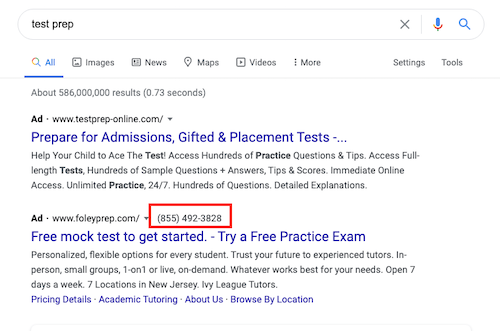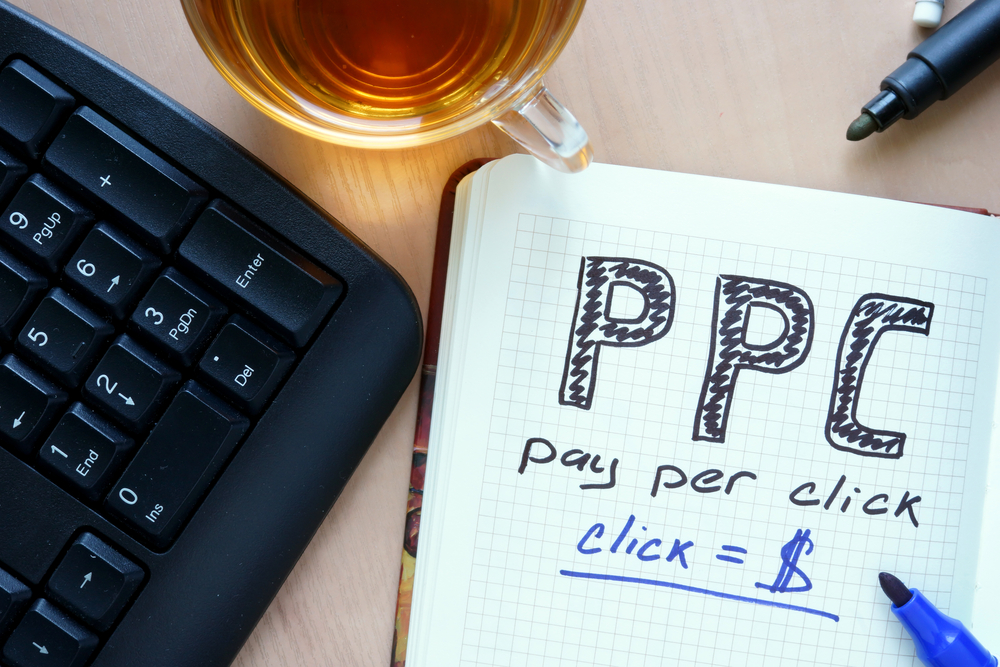Many advertisers still question the effectiveness of incorporating Pay-Per-Click (PPC) into their marketing strategy. While PPC advertising can be costly compared to other advertising media, statistics show businesses earn approximately $3 for every $1.60 they spend when executed properly. PPC advertising is currently available on Google, Facebook, Twitter and LinkedIn; however, Google is the most popular platform as almost 80% of all companies utilize Google for PPC. According to 2016 data, PPC ads can increase brand awareness by 80%. Furthermore, a business can potentially generate more qualified leads while increasing ROI because approximately 41% of clicks go to the top 3 paid Google ads.
While PPC advertising offers enormous benefits, the most difficult aspect of launching a monthly PPC campaign is nailing the text ads. Intimidating to PPC neophytes, there are a few fundamental concepts that are required for any and every text based PPC ad. To streamline the creative writing process, let’s review the 7 elements of a successful PPC ad.
1). The Headline
The headline is critical! First and foremost, it’s the most important aspect of any PPC ad because it arrests the viewer’s eyes. Truth be told, the headline may often be the only element of the PPC ad that viewers actually read. Therefore, don’t miss your best opportunity to attract a potential customer because a strong headline determines whether or not someone clicks through to view your landing page. When creating a text ad, choose your words wisely because the headline has a limit of 25 characters; simply put, be clear and concise.
Many PPC experts recommend including a valuable proposition within the headline. Does your company offer free shipping or discounts? If so, include this incentive within the headline if space permits. Finally, don’t forget to integrate keywords that users are searching for into your headline. Google will grant ads a higher quality score if they align with appropriate keywords in your ad group and landing page.
2). Description Line 1
After grabbing a viewer’s attention with an awesome headline, keep their interest with a unique offer or valuable proposition to help your business stand out from the competition. Often regarded as the meat of your PPC text ad, advertisers use the description line to promote their products and services. With only 35 characters allowed, you need to be concise and direct in order to avoid confusion. Similar to your ad’s headline, the description line should contain keywords users are searching for; doing so will allow these keywords to appear in bold if they match a user’s query.
3). Description Line 2
Once you’ve enticed a potential customer with a great offer, use actionable words to provoke enthusiasm and reel them in! A second 35-character parameter allows for advertisers to build off the first description line by including a strong call-to-action (CTA). Implementing a call-to-action into your ad copy will help drive click-through-rates and increase your conversion rates. Some examples of strong call-to-actions include:
- Buy Now
- Shop Today
- Contact Us
- Sign Up
Can’t decide which call-to-actions to use? Simply create and test multiple ads with different CTAs to measure each ad’s effectiveness.
4). The Display URL
The display URL is the website link users see when viewing your ad in the search engine result page (SERP). While not necessarily the URL visitors will be taken to after clicking your ad, your display URL still needs to match the domain of your landing page. Choose your display URL carefully as it has a strict limit of 255 characters with only 35 characters visible to the user. For aesthetic purposes, many PPC experts recommend setting your website’s homepage as the display URL.
5). The Destination URL
Unlike the display URL, the destination URL has no character limit, cannot be seen by users, and represents where visitors are taken to after clicking your ad: your optimized landing page! Make sure your landing page contains relevant keywords in your ad group, as well as the same offers from your ad text. To measure the effectiveness of your landing page, you can also add special URL parameters to your destination URL; this allows you track visits and actions through Google Analytics.
6). Call Extensions
This element is completely optional; due to the influx of mobile search queries, however, many PPC experts strongly recommend incorporating call extensions into your ads.

Call extensions are clickable phone numbers within your ad, which makes it convenient for potential customers to call immediately after viewing your ad on their mobile device.
7). Sitelinks
Like call extensions, sitelinks are optional but highly recommended. Sitelinks direct potential customers to other pages within your website that may benefit them or answer their questions. Furthermore, Google ranks ads with sitelinks higher; thereby, increasing exposure on the web.
Bringing It All Together
Congratulations! You’ve created copy for your PPC ad! Next, be sure to test and retest your ads to see which elements can be further optimized for maximum effectiveness. PPC experts advise having at least two ads per ad group, and test different value propositions or keyword combinations to evaluate which ad performs best. Remember, writing great ad copy doesn’t always happen on your first try, but continuously testing ads allows you to evaluate which ad best resonates with your customers.
Are you interested in implementing PPC ads into your marketing strategy? Or maybe combine PPC with an SEO strategy? For more information, contact the digital marketing experts at Premiere Creative today or give us a call at (973) 346-8100!

